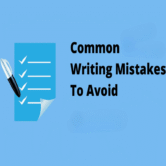
Briefly outline the cost factors in sign and banner production.
INTRODUCTION
When planning for sign and banner production, understanding the cost factors involved is crucial for budgeting effectively. From material selection to installation, several variables influence the overall expense. Whether it’s a single storefront banner or a comprehensive signage system for an event or business, each component adds to the final cost. Here is a brief overview of the key cost factors in sign and banner production.
1. MATERIAL SELECTION
The choice of material—vinyl, fabric, aluminum, acrylic, wood, or composite—significantly impacts cost. Durable, weather-resistant, or specialty finishes typically cost more than standard materials. Eco-friendly or sustainable options may also come at a premium.
2. SIZE AND FORMAT
Larger signs and banners naturally require more material and labor, increasing the price. Custom shapes, multi-panel systems, or oversized formats for outdoor visibility will also elevate production costs.
3. DESIGN COMPLEXITY
Intricate graphics, detailed illustrations, custom fonts, or multi-language layouts may increase design fees. Professional graphic design services or extensive revisions can also add to the total cost.
4. PRINTING METHOD AND COLOR USAGE
High-resolution or full-color printing is generally more expensive than basic one- or two-color options. Specialized printing techniques (e.g., UV printing, screen printing, or eco-solvent processes) can also influence pricing.
5. FINISHING AND MOUNTING OPTIONS
Add-ons like grommets, hems, pole pockets, lamination, or framing increase durability but also add to cost. Backlit signage or banners requiring hardware for mounting or tensioning incur additional finishing expenses.
6. QUANTITY AND CUSTOMIZATION
Bulk orders may reduce the per-unit cost, while one-off custom pieces often cost more due to setup fees and individual design work. Personalization for multiple banners with slight variations can also affect pricing.
7. INSTALLATION AND LABOR
Professional installation, especially for large, illuminated, or hard-to-reach signs, adds labor costs. This includes equipment rental (e.g., lifts or scaffolding) and permitting if required by local regulations.
8. LOCATION AND SHIPPING
Transportation costs depend on the size, weight, and delivery destination of the signage. Remote areas or expedited shipping needs will increase logistical expenses.
9. PERMITS AND REGULATORY FEES
Some municipalities require permits for signage, especially for outdoor installations. Fees vary by region and type of sign, and compliance with zoning laws may incur additional administrative costs.
10. MAINTENANCE AND LONGEVITY
Investing in higher-quality materials or coatings may have a higher upfront cost but lower long-term maintenance expenses. Reusability and durability should be considered in the overall cost-benefit analysis.
CONCLUSION
The cost of producing signs and banners is influenced by a combination of design, material, production, and logistical choices. By understanding these factors, businesses can make informed decisions that align with both their budget and branding goals.
HASHTAGS
#SignageCosts #BannerBudgeting #PrintDesignExpenses #SignProduction #BannerDesignTips #SignageMaterials #CustomSignage #MarketingBudget #VisualCommunication #DesignBudgeting #SignageSolutions #CostEffectiveDesign #BusinessBranding #EventSignage #ProductionCosts #InstallationExpenses #PrintingTechnology #SmartSignagePlanning #AdvertisingTools #ProfessionalSignage #DurableDesign #MarketingAssets #SignDesign #BannerPrinting #BudgetSmartDesign





